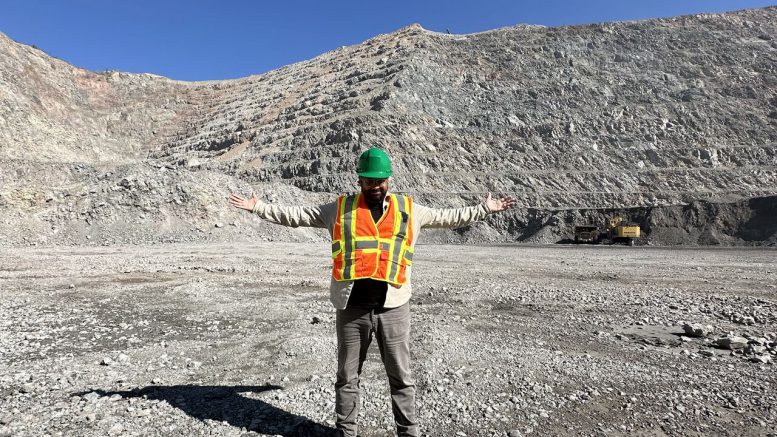British Columbia’s exploration sector has over 60 critical mineral projects waiting for permits. It’s a $38-billion pileup of economic opportunities, some waiting indefinitely, Association for Mineral Exploration (AME) president and CEO Keerit Jutla says.
Without action, B.C. risks falling further behind Ontario and Quebec, whose streamlined policies and targeted funding have helped them attract more exploration funding, Jutla said. His group represents about 5,000 members.
“B.C. can choose to be a world-class jurisdiction or let opportunity slip away,” Jutla told The Northern Miner in Vancouver on Monday. “Clear permitting timelines, stable policies, and strong partnerships with Indigenous communities are essential. A project’s viability shouldn’t hinge on bureaucratic delays.”
The permitting backlog poses existential challenges for the exploration industry, said Jutla, a lawyer with a decade of experience in the resources sector. And it’s unclear whether the recently re-elected New Democratic Party (NDP) government, led by Premier David Eby, will bring the changes needed to turn the tide. The party secured a slim majority in the Oct. 19 election, winning 47 out of 93 seats in the Legislative Assembly.
Explorers face inconsistent timelines and poor communication. Some companies have abandoned projects or lost funding tied to exploration deadlines. The government’s ability to reform regulations will determine if it can seize the moment, Jutla said.
“Explorers need certainty,” he said. “If you’re spending millions on drilling and staking, you can’t have a permit delayed indefinitely.”.
Jutla warns that B.C.’s reputation as a mining powerhouse is at stake. B.C. competes with established mining hubs like Australia,Chile, Ontario and Quebec. Their infrastructure and investor-friendly policies attract capital, he said.
Ontario’s Mining Act, for example, mandates consultation before exploration begins. This proactive model contrasts sharply with B.C.’s reactive stance, Jutla said.
Both provinces have funding programs in place to attract exploration, such as Ontario’s annual $13-million Junior Exploration Program. It includes $4 million for critical minerals. Quebec has, too. It has large funding mechanisms and fast permitting that attract significant investment. Jutla says both provinces outshine B.C. in offering clear and predictable frameworks.
“Investors will go where they see stability and efficiency,” Jutla said. “Right now, that’s not B.C.”
Mineral Act review
There are four and a half months until a B.C. Supreme Court deadline requiring the province’s Energy, Mines and Low Carbon Innovation ministry to revise the Mineral Tenure Act (MTA) to meet Indigenous consultation requirements. In September last year, the court ruled that the current act allows automatic registration of mineral claims without consulting Indigenous communities, which is inconsistent with the province’s duty to consult.
It gave the province 18 months to reform the legislation, requiring explorers to consult with First Nations before registering mineral claims.
Jutla said the government’s initial response has been too slow, adding that any delays in the review process hurt the industry’s ability to contribute and adapt to new regulations.
On the other hand, the government surprised stakeholders in March, by moving quickly to restrict mineral claim registrations and mining in the Gitxaała and Ehattesaht First Nations’ territories. The measures aim to safeguard Indigenous interests during the MTA reform process, however they were put in place without industry consultation.
However, B.C. leads in prioritizing reconciliation, which Jutla says is the right thing to do. Federal and provincial equity funds now allow First Nations to take ownership stakes in mineral projects, creating long-term benefits for Indigenous communities and fostering partnerships that can strengthen the industry over time.
Changing landscape
The AME has developed an Indigenous engagement toolkit in response to the changing regulations. It also created tailored collaboration playbooks with First Nations. These frameworks help explorers work through consultation processes while respecting community goals.
“Projects that engage early and often see better outcomes,” Jutla said.
On the operational front, the province also faces an urgent need to attract and keep skilled workers. With mining activities ramping up globally, B.C. must compete for talent in geoscience, engineering, and technical roles.
Jutla sees technology as a possible solution. AI-driven mineral mapping and non-invasive geochemical surveys are efficient. They appeal to younger workers.
“We need to show the next generation that mining is innovative, sustainable, and critical to the energy transition,” he says.
Annual Roundup
The AME is finalizing preparations for the annual Roundup event in Vancouver from Jan. 20-23 themed ‘Securing Our Future.’
The conference will gather geoscientists, investors, Indigenous partners and policymakers.
Critical minerals, regulatory efficiency, Indigenous engagement, and workforce diversity are key topics.
Early bird registration is open, with discounted student rates and $50 all-access passes available for the final day. Visit https://roundup.amebc.ca


Be the first to comment on "Permitting delays impact BC projects valued at $38B, AME says"